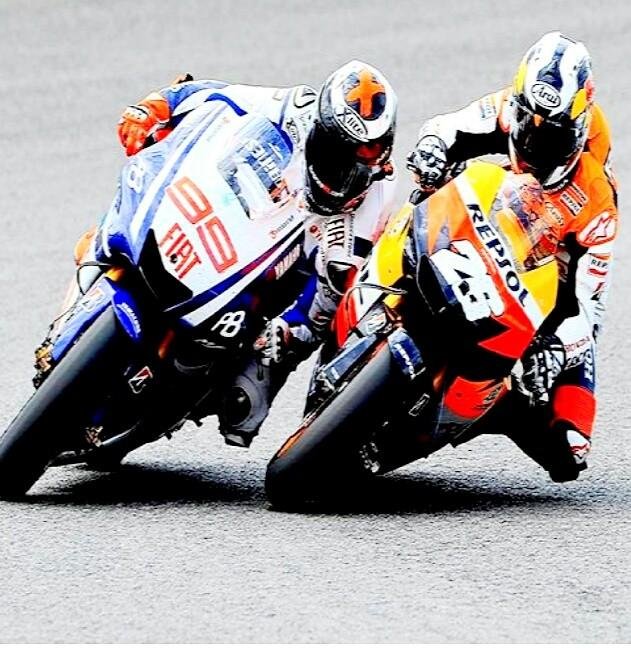
Studying motorcycles also requires physics calculations, several sizes are used in this field. Physical calculations are required to know: engine capacity, cylinder volume, compression ratio, piston velocity, torque, power, correlation between engine and motor speed at each gear position and rear wheel drive power from motorcycle.
Machine Capacity
Engine capacity is represented by the volume formed when the piston moves upwards from the lower BDC (Bottom Dead Center) to the TMA (Top Dead Center) / TDC (Top Dead Center), also called the step volume. The step volume is calculated in units of cc (cm3 / cm cubic). The formula to calculate it is:
Problems example:
Suzuki Smash brochure carries a data diameter of 53.5 mm with a piston step 48.8 mm, determine the volume of the steps.
Resolution:
Given: D = 53.5 mm
S = 48.8 mm
Phi = 3.14
Asked Volume step?
Answer:
So the volume step of the Suzuki Smash motor is 109, 7 cc
rounded to 110 cc.
Volume of the Burn Room
The volume of the combustion chamber is the volume of the space formed between the cylinder head and the piston head that reaches TMA. Denoted by Vc (Volume compression)
Cylinder Volume
The cylinder volume is the total number of increments between the step volume and the volume of the combustion chamber.
The formula: Vs = Vl + Vc
Information :
Vs = Volume of cylinder (cc)
Vl = Volume step (cc)
Vc = Volume of combustion chamber (cc)
Compression Comparison
Compression ratio is the ratio of cylinder volume to compression volume. Compression comparison is related to step volume. When expressed in a formula then:
The amount of compression ratio for touring motorcycles ranges between 8: 1 and 9: 1. This means that as long as the compression step on the piston is compressed eight times from its last volume. The higher the compression ratio, the higher the pressure and the final temperature of the compression.
Fuel Efficiency and Heat Efficiency
Heat value (heat) of fuel we need to know, so that the heat balance of the motor can be made. The efficiency or non-performance of a motor, reviewed on the basis of the calorific value of the fuel. The calorific value is related to specific gravity. In general, the higher the specific gravity the lower the calorific value. Burning can take place
with perfect, but also can not perfect.
Incomplete combustion can result in:
Heat losses in the motor become large, so the efficiency of the motor to go down, the business of the motor to fall also on the use of fixed fuel.
The rest of the combustion can cause the piston springs to attach to the groove, so that it does not work anymore as a piston spring.
The remainder of combustion may also be attached to the discharge hole between the valve and the holder, especially on the exhaust valve, so that the valve can not close tightly.
The burning residue that has become hard inherent between the piston and cylinder wall, blocking the lubrication, so that the piston and cylinder easily wear out.
Fuel efficiency and heat efficiency are critical to the efficiency of the motor itself. Each motor has a different efficiency.
Piston Speed
As the engine rotates, the piston speed at TMA and TMB is zero and at the center is faster, therefore the piston speed is taken on average.
With the following formula:
V = Average Piston Speed
L = Step (m).
N = Round engine (rpm).
From the TMB, the piston will move back upward because of the crankshaft rotation, thus at 2x the piston movement, will produce 1 turn of the crankshaft, if the crankshaft makes N rot, then the pistons move 2LN. Because it is expressed in seconds then divided by 60.
Torque
Torque = force x distance
The rotary force on the rotating part is called Torque, the motor is driven by the torque of the crankshaft. The more the number of teeth on the gears, the greater the torque that occurs. So the speed is reduced to half.
Circumstances in the Machine
Maximum Torque
The maximum torque of each motorcycle varies. When the motorcycle works with maximum torque, the rear wheel motion is also maximum. The greater the torque, the greater the power of the motorcycle. The amount of torque is usually included in the technical specification data, service manual or in the marketing brochure of a motor product.
Power (Horse Power)
The average work is measured by end-power (The torque of the crankshaft moves the motorcycle, but this is just a force for moving a motorcycle and the speed at which a motorcycle is driven is not taken into account.) Power is the speed at work.
nice blog, related to math.. ^^
Downvoting a post can decrease pending rewards and make it less visible. Common reasons:
Submit
Thanks bro
Downvoting a post can decrease pending rewards and make it less visible. Common reasons:
Submit